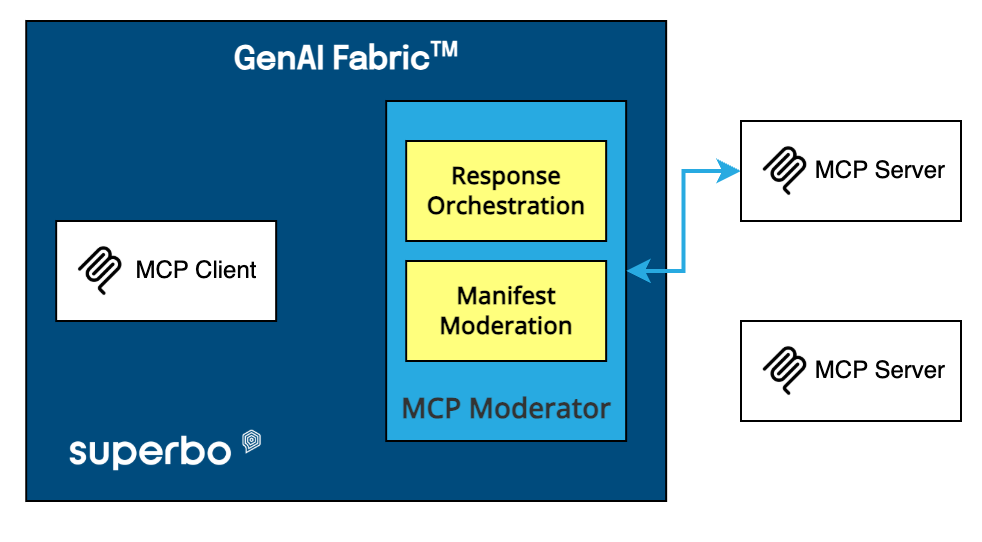The Hidden Environmental Cost of AI
As enterprise AI adoption soars, so do the energy and resource demands of AI systems. Every impressive demo of a large language model hides a hefty carbon footprint in the background. Training GPT-3 (175 billion parameters) gobbled up an estimated 1,287 MWh of electricity, emitting 502 metric tons of CO2 – about as much carbon as 110 gasoline cars running for a year. It’s not just electricity: running data centers for AI consumes vast amounts of water for cooling. Microsoft reportedly used 700,000 liters of water just to train one large model, and each 20-50 queries to GPT-3 can consume an estimated half a liter of water through cooling and power generation needs. In an era where enterprises tout sustainability and governments push for greener operations, AI’s growing energy appetite is coming under scrutiny.
Current data centers already account for 2.5–3.7% of global greenhouse gas emissions – more than the aviation industry. AI workloads are a fast-growing slice of that pie. Large Language Models (LLMs) require tens of thousands of power-hungry GPU chips, both for training and for serving user queries. Unlike traditional software, which has a one-time cost to develop and relatively cheap to run, advanced AI can incur ongoing large emissions with every new model version or even each user query. This has led researchers to coin the term “Red AI” for AI research that prioritizes raw power and accuracy at the expense of efficiency. By contrast, “Green AI” calls for AI development that also optimizes for energy efficiency and carbon footprint, not just performance metrics.
For enterprises, these environmental considerations aren’t just altruistic – they are increasingly tied to business KPIs and reputation. Many companies have ESG (Environmental, Social, Governance) goals including carbon neutrality pledges. AI projects that burn megawatts of power could conflict with these goals or attract negative attention. Additionally, the costs of energy are non-trivial: inefficiency in AI means higher cloud bills or data center costs. Simply put, sustainability in AI design matters for both planet and profit.
Leaner Models, Greener Operations
One of the most impactful ways to reduce AI’s footprint is to right-size the models and use cases – echoing the theme that not every problem needs a 175B-parameter behemoth. Smaller, well-tuned models can deliver huge energy savings. They consume less power to run and can often be deployed on energy-efficient hardware. For example, DistilBERT, a compact version of BERT, achieves about 95% of BERT’s language understanding capabilities while using roughly 40% less compute. By using techniques like knowledge distillation – where a large model “teaches” a smaller model – enterprises can dramatically cut down model size and inference cost without severely sacrificing accuracy.
Moreover, smaller models can often run on CPUs or mobile-class chips instead of top-tier GPUs, which further reduces energy draw. Salesforce’s research found their small domain-specific model (XGen) could outperform larger models by focusing on quality data and efficient training – and because it’s small, it can even run on-device (like on a phone) for tasks like field service support. Running AI at the edge or on mobile devices not only reduces latency but can also be more energy-efficient: you’re using just a fraction of a cloud data center’s power, and only when needed, rather than keeping giant servers humming 24/7.
Case in point: On-Device AI Agents. Imagine a field technician troubleshooting equipment in a remote location. Instead of pinging a huge cloud model (with energy-guzzling servers) for every question, a small AI model on a tablet helps diagnose issues locally. Salesforce’s XGen-ML demonstrates this – a tiny model on a phone can accurately assist with tasks like diagnosing a machine problem without cloud connectivity. This not only saves the electricity (and cooling) that a cloud data center would use, but also ensures the AI is available off-grid. Designing AI agents that operate locally when possible or only use the cloud for heavy lifting is a smart way to minimize energy use.
Efficient Model Architecture
When large models are necessary, there’s still plenty of room to optimize. Researchers and engineers are developing energy-efficient architectures and methods:
Model Pruning
Removing unnecessary neurons/weights from a neural network – essentially trimming the fat – can reduce computation without hurting performance much.
Quantization
Using lower precision (like 8-bit instead of 32-bit floats) for model computations can speed up inference and cut power usage dramatically. Many modern AI chips support low-precision math precisely for this reason.
Efficient Transformers
New variations of the Transformer architecture (the backbone of most LLMs) aim to do less work. For example, models that limit the attention scope or use sparse attention can maintain accuracy with fewer computations (Mistral 7B vs GPT-3 approach differences hint at such efficiency). Enterprises should keep an eye on these innovations – adopting a more efficient model architecture can yield a quick win for sustainability.
Designing Energy-Efficient AI Systems: Practical Tips
Beyond the models themselves, system design choices have a big impact on energy consumption. Here are some strategies enterprise teams are adopting to green their AI:
Intelligent Orchestration
AI agents often involve multiple steps – say, retrieving data then generating an answer. Rather than feeding everything to an LLM, design your agent to use simpler methods when possible. For example, if an AI agent needs to fetch today’s sales numbers from a database, don’t have the LLM “guess” or scan a whole data dump – call a database API or run a query. Tool use is far cheaper computationally than pure generative guessing. This is part of a broader hybrid approach: use deterministic software or smaller models for subtasks, and reserve the heavy LLM only for the parts that truly need sophisticated reasoning or NLU (Natural Language Understanding). By reducing the workload on the LLM, you cut down overall energy use. It’s the equivalent of not using a private jet when a train will do – match the solution to the need.
Batch and Cache
In many enterprise scenarios, AI queries come in volume. Running things one by one can be inefficient. By batching tasks, you let the hardware do more work per unit of energy. For instance, instead of generating 100 separate AI summaries one after another, process them in batches of 10 if feasible – modern AI hardware can handle parallel inputs, effectively amortizing the energy cost. Likewise, implement caching: if your AI agent frequently gets the same request (e.g., “What’s our refund policy?”), cache the answer. Serving a stored response uses negligible energy compared to invoking the model each time. Many enterprise AI platforms now include semantic caching layers that detect repeat questions or identical tasks.
Optimize Hardware Usage
Choose the right hardware for the job. GPUs are great but sometimes overkill; a CPU might handle a small model just fine at lower wattage. Newer AI accelerators (TPUs, neuromorphic chips, etc.) often offer better performance per watt. If you’re cloud-based, opt for energy-efficient instances or those powered by renewable energy. Major cloud providers like Google and AWS highlight their green data center regions – using those can cut the carbon footprint of your AI workload. Some companies even schedule non-urgent AI training jobs for times when renewable energy supply is high or energy prices are low, a technique known as “carbon-aware computing.”
Monitoring and Reporting
You can’t improve what you don’t measure. Start tracking the energy usage of your AI services. Tools exist to estimate carbon emissions of compute tasks. By reporting this internally (or even publicly in sustainability reports), you create accountability and incentive to improve. The concept of Green AI encourages AI labs to report computational cost alongside accuracy for research results. Enterprises can do similar: incorporate efficiency metrics into project goals. For example, an NLP model deployment could be evaluated on responses per second and joules per response. This aligns the team with efficiency as a design objective, not an afterthought.
Lifecycle Perspective
Consider the full lifecycle of your AI models. Training is energy-intensive; so is hyperparameter tuning. Streamline training by using transfer learning (starting from a pre-trained model instead of training from scratch) – this can save a huge amount of compute. And once a model is deployed, continuously evaluate if a lighter model or an updated approach could replace it. Don’t let a huge model run for a year unchecked if a new one could achieve the same with 1/10th the cost. Treat models as living products that might need a “greener” version over time.
Sustainability as a Business Advantage
Designing AI agents with sustainability in mind isn’t just about being a good corporate citizen; it’s becoming an enterprise differentiator. Clients and consumers are increasingly conscious of the environmental impact of the products and services they use. An enterprise that can say “our AI-powered platform is carbon-neutral” or “we prioritize green AI practices” earns trust and goodwill. We’re already seeing RFPs include questions about energy efficiency and carbon footprint of AI solutions, especially in public sector and European contracts.
Furthermore, efficiency improvements often correlate with better performance and scalability. If you cut inference time and energy by 50%, you likely made the system faster and able to handle more load – directly benefiting your user experience and bottom line. It’s akin to how optimizing a logistics route saves fuel and also time. Efficiency is a win-win.
Lastly, regulatory trends may encourage or mandate greener AI in the future. While the EU AI Act doesn’t explicitly enforce sustainability, the EU’s overall direction on tech and sustainability is clear (see the proposed Green Deal and digital sustainability initiatives). Getting ahead on Green AI prepares enterprises for a future where carbon accounting for AI might be required.
In summary, sustainable AI is smart AI. By focusing on energy efficiency in generative AI and AI agent design, enterprises can reduce costs, align with global sustainability goals, and lead in innovation. As AI becomes ubiquitous, its environmental footprint will matter – those who lighten that footprint will carry the day.







